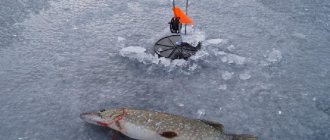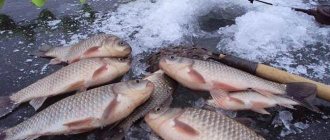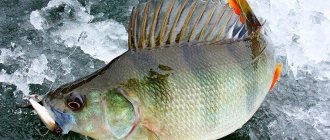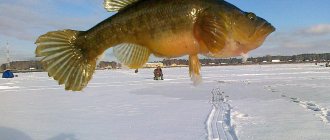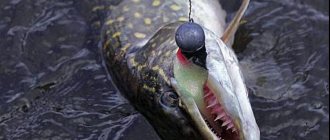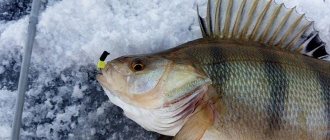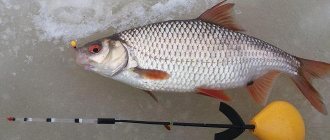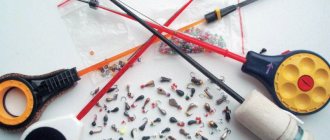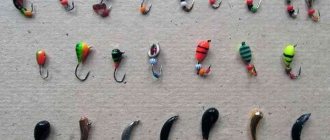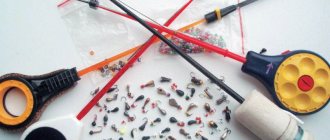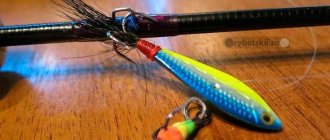Fishing is a way of life for which there is no season. And every season, every month has its own nuances that affect a successful catch. Neither the scorching sun nor the bitter frost stops trekking lovers. Therefore, roach fishing in November is of particular sporting interest. Roach fishing in November is very good.
Having fattened up for winter, specimens can be found weighing both 300 grams and half a kilogram. With the right approach, you can reap a good harvest in one go. At this time they fish from a boat and from the shore, on a feeder and on a float, and there are even more people who want to compete than in the summer.
Peculiarities of life of the inhabitants of fresh water bodies in autumn
All nature is preparing for winter and the inhabitants of fresh water bodies are no exception. Outwardly, this may be almost imperceptible - they will become more transparent, the flow will slow down, and at the end of November ice will already appear on ponds, lakes and small rivers. The food becomes smaller every day: there are no larvae, no mosquitoes, no bloodworms, or other insects circling over the water. The life cycle of algae is over, they fall to the bottom and, rotting, produce carbon dioxide. Accordingly, the inhabitants of reservoirs adapt and get used to new conditions. The roach avoids shallow water, because now any enemy can see it. The rotting vegetation causes oxygen starvation in the fish, and the little remaining food - microorganisms and crustaceans - have long ago found deeper places and buried themselves deep in the silt.
Expert opinion
Valery Andreevich Sizov
Professional fisherman with 35 years of experience.
Atmospheric pressure fundamentally influences the behavior of roach. This is especially true for sudden changes - in such cases, the track completely loses interest in food, because... has difficulty breathing and is busy stabilizing its buoyancy. Therefore, when starting your preparations, pay attention to the weather forecast.
The period of forced migration begins - the track is looking for areas more saturated with oxygen and food. Typically these are areas where there is current or deeper recesses. Even a small circulation of water helps to breathe and nourish. Water brings food to the roach, washing it from the bottom, and carries the smells of food, to which the whole school immediately rushes, because starting from the first frost, almost all types of fish gather in schools. This feature is typical for the cold season - together it is easier to fight for survival and withstand the onslaught of predators. And for a fisherman, this factor can bring a very good catch with the right approach, and it doesn’t matter where you are - on a river or lake. It is here that it is necessary to take into account a number of nuances that are typical for roach fishing in November.
How to find fish
November. Sorozhka has already gathered in close flocks and left its native shores. Small cyprinids make it difficult to find their habitat by occupying small areas of water bodies. In addition, they become less active, slower, sleepier and lazy, trying to maintain strength. Not a trace remains of the former playful and active individuals. But the factor that plays into the hands of fishermen is that the roach does not have enough of its usual food and reacts more vividly to bait.
Most of the day and night, the track hides in deep holes. The school usually “comes to life” in the morning and goes in search of small crustaceans and various microorganisms in the bottom soil. Roaches stay away from other fish species and try not to enter into conflicts with them, so the appearance of other inhabitants, for example, breams, cannot serve as a reliable guide.
Best autumn habitats
The best places in late autumn are on small rivers, in tributaries and small channels - here it is much easier and faster to find a path than in large channels. When choosing depth, look for places from 2 to 4 meters. In such places, fish gather in large schools and are often found close to the shore. It’s easy to identify places where shoals may stand:
- steep bank - as a rule, there should be a good hole nearby;
- areas with reverse flow near the shore and edge;
- bushes, tree roots going into the water, stones and large snags.
It is also worth noticing a tree that has fallen into the water; it allows the roach to hide from the current.
Where to find holes and edges?
Holes and gullies are found in any plane of the river. Near the coast and in the distance. Size here, in principle, is not important, the main thing is that here, in the mud, there is food (crustaceans, bugs and other microorganisms buried in the mud) and there is no strong current, which means it is possible to find a large school. If the topography of the reservoir is familiar to you, it is worth fishing all these places that are comfortable for fish.
Where there are no holes, there will definitely be edges. The bottom relief of our rivers is literally replete with these irregularities.
Expert opinion
Valery Andreevich Sizov
Professional fisherman with 35 years of experience
. An edge is a cliff of the bottom, a sharp change in depth or an inclined “dump” - a small slide under water. The place to look for schools of roach is under the dumps closest to the shore.
What are the benefits of driftwood and stones?
Bushes, snags and large stones are sure to attract the attention of the fisherman. As a rule, they are located close to the shore. Tree debris, roots going into the water, large boulders allow roaches to hide from direct currents and predators and are able to retain silt in which food is “hidden”. These places are the most promising for November fishing.
It would seem that you have found a place and caught luck by the tail? But in reality, I found a large school, but there was no catch except a couple of fish. Successful fishing can be ruined not only by the wrong place. To make your trophies happy and arouse the envy of your friends, let’s see what they use to catch roach in November.
Search for fish
Where to look for roach in a pond? Finding a roach in November is not difficult, it tries to stick to its summer sites, the only thing that can change is the depths, they increase as the weather gets colder. The favorite places for roaches are quiet bays with depths of more than a meter, not heavily silted and overgrown. Fishing in shallow holes near steep banks is very promising; it will be a plus if there are trees on the shore leaning towards the water. Very often, roaches are found on the borders of reed thickets with clear water.
The only thing you should not forget about is that schools of roach move to deeper places with the arrival of cold weather.
The most important point: Tackle
How to ruin a good fishing trip? Choosing the wrong gear will help you with this. Moreover, the age-old question - for a float rod or for a feeder? If you are going to fish in an unfamiliar place, take all your fishing gear. While the track is “grazing” on the bottom soil, it is better to give preference to the feeder. Bottom gear is more effective at long distances.
But if the school is in a hole and right next to the shore? It is clear that the choice will be made in favor of the “float”. The good old way will spice up any fishing trip. But this type of “hunting” has its own difficulties in this cold, almost winter month. In clean and clear water, fish become cautious, so you need to be more careful when choosing gear:
- It is better to put summer fishing line aside and choose the most transparent, thinner but low-stretch line - no thicker than 0.12 mm and 0.14-0.16 mm for a Bolognese fishing rod;
- for a leash, a diameter from 0.08 to 0.1 mm is suitable;
- The length of the leash is about 10-15 cm.
- You can also scare the fence with a hook - you need the thinnest and sharpest specimens from 3 to 5 numbers (18 - 23 by European standards);
- choose a lead bead as a sinker.
Expert opinion
Valery Andreevich Sizov
Professional fisherman with 35 years of experience
Sorog meat is easily digestible protein, vitamins and minerals, including primarily polysaturated Omega 3 acids. Roach has a low calorie content per 100 g - 88 kcal.
Float
Pay special attention to the float. Bites this season become almost unnoticeable and sluggish, which is why so much attention is paid to the alarm. A small float designed for a load capacity of up to 0.5 g should have a thin antenna and be very light. The top should be painted in a contrasting color. On clear water with a light bottom - in a dark tone, and on dark water, vice versa.
Of course, the weight of the float should be small, this is what achieves the greatest sensitivity of the equipment. Experienced autumn fishing enthusiasts have identified the most suitable models:
- olive-shaped - a classic option for deep fishing, copes well with ripples in the water, compatible with all types of fishing rods;
- standard version of the waggler type - for long distances;
- barrel - designed for use with fly and plug gear, suitable for fishing in waves and in strong currents;
- inverted drop - a float for deep fishing, has maximum sensitivity;
- elongated spindle - usually chosen when roach activity is low; sliding floats of a classic shape - for Bolognese rods.
The final choice in favor of one option or another can only be made by the fisherman himself after sufficient practice.
When and what to catch sorog?
Due to its prevalence, the soroga is very often the prey of fishermen. But still, the amount of catch depends on some factors, such as the type of reservoir, the current time of year, weather or even time of day. It is unlikely that you will be able to catch large specimens of sorog in small ponds, rivers and reservoirs.
Reservoirs with an area of more than 30 hectares and clean water will be the best habitat for large fish.
In summer, the sorog practically does not bite in the heat. It is believed that large sorog is better caught at night, and during the day the fish go to greater depths. It is better to catch sorog at dawn or sunset, at which time it gathers in small flocks at a depth of up to half a meter. If fishing takes place from the shore, then the best choice would be fishing with a fishing rod with a float.
Bloodworms, cuttlefish, maggots and others are used as bait. After the rains, the sorog bites well on dung or simple earthworms. Soroga prefers to take bait from live bait.
Autumn sorog is considered the most delicious, because the fish senses the approach of winter and begins to fatten up and gain internal fat. However, catching a sorog in the fall will not be as easy as in the summer. Due to changing weather conditions, the sorog becomes less active.
In October and November, the sorog no longer moves much around the reservoir and begins to lead a sedentary lifestyle. On rainy, cold days of autumn, the sorog practically does not bite, so you need to start fishing on clear and sunny days.
As in summer, it is better to start catching sorog at dawn, then schools of fish go to rest for a while, and in the afternoon the bite continues until sunset. In autumn, the summer flowering of the rivers stops, the water becomes clean and transparent, and the sorog is not so easy to catch. The fish becomes shy and cautious.
Summer gear is not suitable for autumn fishing. In order not to attract attention and not arouse suspicion among the fish, the fishing line and hooks should be taken thinner than in summer. The frequency of biting largely depends on the correct choice of equipment. The sorog is attracted to bloodworms, worms, maggots, and fly larvae as bait.
In winter, the most successful time for catching sorog is considered to be the period of the first ice , when the fish have not yet gone to depth, and the period of the last ice, in February, when the fish becomes less careful due to hunger and searching for food. The sorog's bite in winter also depends on the weather. In severe frosts, the fish practically do not bite.
Good bite occurs in cloudy weather with a slight breeze and during a thaw. The best time of day for catching sorog in winter is considered to be early morning and evening, a few hours before dusk. In order not to miss the sleepy winter sorghum, fishermen use very sensitive gear in winter. They catch a sorog on a hook or a jig.
You can take a rigid fishing rod, but the float should be very light so that all the blows of the sorog on the hook are felt. You can use bloodworms, maggots, pieces of worms, and dough as hook baits. When fishing with a jig, the fish go well with jigs such as “Nymph”, “Devil”, “Ant” and others.
The main difference between spring fishing is that the sorog spawns during this period. During the pre-spawning period, catching sorog can be very productive. As the water temperature rises, the sorog begins to eat before spawning. The fish gather in large schools and constantly move in search of food.
A correctly chosen place near the shore, warmed up under the sun, can bring a good catch. The fishing tool in spring is usually a float rod with a light rod up to 6 meters long. The hook size is selected according to the size of the bait. Bloodworms, worms, maggots and others are used as bait.
Take a look at the article about catching chub with a cockchafer.
Choosing a float rod
For fishing with a float in the fall, you can use different types of fishing rods:
- For coastal fishing, a fly rod with a blind rig is suitable;
- for extra precision in getting to the right place, choose a long plug;
- a match rod is used with a spinning reel and allows you to cast a fishing rod over long distances;
- Bolognese tackle is suitable for medium distance.
The simplest options, available even to beginners, are the fly rod and the Bolognese fishing rod.
Fly fishing rod
For a fly float, it is recommended to choose thin leashes with a length of at least 15 cm. The hooks, of course, are small and sharp. In order to hook a roach in time, hold the rod in your hands - at this time of year the fish tastes the bait for a long time and only then bites. For proper rigging, a line equal to the length of the fishing rod is installed on the rod. The fishing line is equipped with a float with cambrics and small weights, then a leash with a hook is attached. This is the fastest and easiest equipment option.
Bolonka
Bolognese tackle is used over long distances. The length of a telescopic rod with rings can be 6 meters. The combination of length and rigidity allows you to deliver the bait exactly to the right place. In this case, the coil is not needed; it can be replaced with a small drum. The line is pulled with one hand and cast with the other, which allows you to increase the distance. The recommended line diameter is 0.2 mm with a leash thickness of 0.16 mm.
Fishing with a jig with a nod
Equipment with jigs and animal bait is very popular among winter fishermen. In this case, both the play of the bait and the behavior of the bait with an attractive smell act as an irritating factor.
What does the tackle consist of?
In order for roach fishing to be successful on the first ice, it is necessary to use clearly configured tackle, the bait must be of sufficient weight, the nod must be elastic, and the diameter of the fishing line must correspond to the fishing conditions. If you use a light jig with a thick thread, then you can’t talk about any balance; it won’t be able to even it out. And also, you should not take a bait that is too heavy; if the nod is very soft, an inactive fish will simply spit it out. At the moment of lifting the tackle, the flexible nod will not be able to take on part of the load.
The fishing rod can be of any shape, the main thing is that it is comfortable to work with, the handle should fit well in the hand. Axleless, balalaika, and filly are suitable here. For beginners, a regular store-bought fishing rod with a cork/foam handle will do. Professionals in their field prefer to use lightweight types of foam balalaikas and small sports fishing rods for roaches.
To make a whip, manufacturers often use materials that are sufficiently able to withstand negative temperatures and at the same time have flexibility. This is vinyl, polycarbonate, or any other plastic material. The optimal length of the whip is 15–20 cm.
The equipment for catching the silver weasel should be chosen thin, where the diameter of the fishing line is in the range of 0.08-0.10 mm. It is effective to use a short leash 3–4 cm long on first ice, which is mounted 5–7 cm higher from the main bait. 1-2 pieces of bloodworms are enough on the hook. The fish can attack both during play and in a standing position from the bottom. This occurs due to the natural behavior of the nozzle when it enters the water.
Bloodworms are especially catchy at the beginning of winter. But if the fish gets too many, then the larva of the burdock moth often saves the fish. You can try using bread crumb or dough for winter fishing. In addition, roaches love to feast on both worms and small maggots, which must be added to the bait mixture for greater effectiveness.
Setting up gear and fishing
In the recent past, fishermen made nods from boar bristles. Now they are replacing synthetic materials: lavsan, x-ray film. Considering that the nod must be selected according to the weight of the bait, you should focus on test values. You can make a nod at home from a watch spring or carbon fiber, but this process has its own difficulties.
If there are no test parameters on the nod, use an option that would tilt a quarter of a circle under the weight of the bait. If necessary, the nod can be adjusted by sharpening it to a cone in thickness and width using a blade.
At the beginning of winter, roaches show increased interest in baits, bites are energetic, the nod noticeably bends and rises. There is no point in delaying the hooking here. If the weather conditions are not very favorable for successful fishing, then you can determine the careful touch of the roach to the jig by the slight swing of the nod. This is quite enough to hook a fish.
To increase the chances of catching roach on the first ice, you just need to reduce the thickness of the fishing line (0.06-0.08 mm).
Hooking should be done carefully; sudden movements can cause the bait to be lost. In case of cautious bites, it is wiser to move the bait slightly downwards, giving way to the prey, and only then make a jerk.
If there is a large specimen on the hook, then it is better to reduce its resistance with your hands. When the individual calms down, pull it to the surface and take it in the hole. If the hunt is carried out in snags, then it is necessary to act proactively, otherwise it will easily disappear into the thickets, tangling the fishing line.
Feeder
Not forgetting about thin and inconspicuous gear, in November they give preference to dark wattle with a cross-section of 0.1 with fluorocarbon leaders. The diameter should be as small as possible, usually from 0.08 to 0.1 mm. To protect the leash when pulling out prey, we use a fidegram measuring from 30 to 80 cm. The optimal length to start the process is 0.5-0.6 meters. When notches appear and there is no bite, the leash is shortened and vice versa.
Often in the process you want to increase the distance to more than 60 meters. For these purposes, use a “medium” rod 3.5-4 meters long. The spool capacity per reel is from 3000 to 4000 and the most sensitive tip for a more accurate bite signal.
Subtleties of fishing on a feeder
In the cold season, fishing can be done after 9 a.m. and throughout the day. To begin with, it is worth spending more time on reconnaissance and identifying promising points. Unlike the warm season, the low frequency of bites allows you to use two feeders at once. Having placed the fishing rods on the stand, it is better to observe them from the side. In this position, you can notice even the most delicate trap. We start fishing after the first feeding, while breaks after the initial bite can reach half an hour or more.
It is better to refill the feeder every ten minutes, while not forgetting about aromatic animal feed in every third feeder. When only one fishing rod is working, the second one can be removed or the distance can be changed, a different edge can be selected, or another food can be added. Regardless of the gear, the bite of November roach is intermittent. Do not despair - roaches feed in schools and for no more than one or two hours. After a short pause, other tracks will come. Unlike summer fishing, larger specimens are caught in the fall, especially in stable weather. With minimal wind, normal pressure and properly selected gear, only laziness or poor feeding will prevent you from bringing home a good catch.
What does the trackfish bite on in late autumn?
Such a popular and simple summer bait as porridge will only harm you on a November day. Steamed pearl barley and loose millet are irreplaceable for the warm season, but in cold water the fish will quickly get enough of this food at the very beginning of fishing. It's all about metabolism - the closer to winter, the slower food is digested.
So what to catch?
roach? Use foods that do not have high nutritional value. As a rule, these are “dusty” feeding balls at the start and they should crumble near the ground or upon touching the day, and not on the surface of the water. Prepare 3-4 balls the size of a small apple to start with and one every half hour thereafter. Thus, you will tie the whole joint to one place, but leave it hungry.
The second option is to feed more often, but in even smaller portions; this method allows you to reduce visibility for a longer time and interest the track. You need to focus on the current situation, the density of the school, the intensity of the current, the weather and the activity of the fish. What should be included in the autumn bait and what does it bite on?
November roach?
- A finely dispersed mixture containing dusty floating particles, such as ground cake, ground hemp seed, barley chaff, milk powder with a small proportion of small bloodworms or other goodies.
- Spicy seasonings for flavor - various peppers, garlic, cloves, cinnamon and others.
- Flavors with meat and sea scents, such as crab.
- The fishing point should be at the very point where the bait particles settle, so the balls need to be thrown a little higher upstream than the float is located.
Small discovery
Literally five minutes later another small discovery was made.
- Do you know what I suspect? She, like a fly, does not stand still, she carries her. So she tramples. - In respect of? — What’s “in the plan”? Here the running donkey turns out. Understand? I'm throwing this upstream.
After fishing in this mode for about an hour, we discovered that the current began to weaken - apparently, the water at the hydroelectric station had been turned off. The strength of the current was no longer enough to drag the feeder: the bite had stopped. Most of the fishermen began to gather. What's the point of catching when there's no bite?
And here we made the third and, probably, the most significant discovery to date. Already knowing that the roach takes exclusively on moving bait and seeing that the current does not want to move the bait, we decided to do it ourselves. The result was a fishing style that we jokingly dubbed “jig feeder.” But, as they say, there is a grain of humor in every joke.
The analogy with “jig spinning” was obvious, but it looked like this: the equipment was thrown to the shore onto a dump in the depths, a little upstream. When the rig reached the bottom, we made 3-4 turns of the reel at a fast pace. Next – a 10-15 second pause, after which the winding starts again. The bites felt like a powerful poke in the hand. The roach usually pecked right at the beginning of the retrieve, when the bait was just beginning to rise to the bottom.
Bait
The capricious mood of the roach must be taken into account and it is necessary to have various animal baits with you. The instability of fish behavior in late autumn is most clearly expressed - until lunch the fish went well on maggots, and then died down. We changed the food to bloodworms or dung beetles and the bite picked up again. Do not forget about combined options (sandwiches), for example, bloodworms and maggots, as well as the combination of worm + bloodworms. Sorog takes a good bait with a jig, and among animal baits you should pay attention to a pig's ear or a cow's udder, cut into very small pieces.
Maggots
In late autumn, not only live maggots are used, but also black, pupated ones; roach also works well on scalded larvae. This bait floats up easily, so on muddy ground you can choose a short leash. It is not known why, but in November the roach prefers this particular version of maggot. Of the living specimens, it is worth paying attention to the small red larvae. Small and mobile, they somewhat resemble bloodworms.
Cow's udder and pig's ear
A painted udder or pig's ear can also successfully replace bloodworms. The udder or boiled pig's ear, peeled from the skin, is cut into tiny pieces no more than 3 mm. The raw materials are filled with red dye overnight and placed in the refrigerator. A day later the bait is ready. It must be said that despite the laboriousness of the process, this method is often more effective in winter than bloodworms.
Plant attachments
Cereals such as steamed wheat and lupine are sold in the markets in the animal feed departments. Before cooking, they are soaked for 12 hours and boiled for three to four hours until fully cooked.
